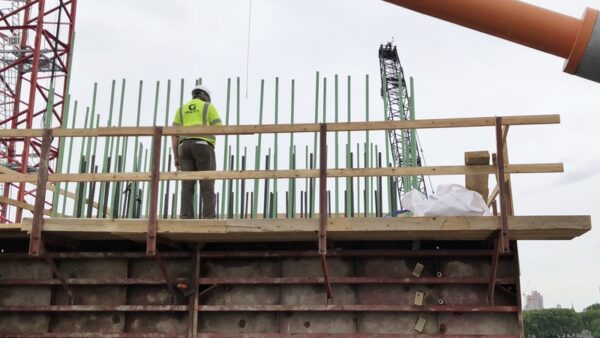As they get older, some master tradespeople evolve subtle techniques of movement that reduce wear on their joints and muscles, allowing them to do more work with less effort than novices, a study has shown.
Using a load’s momentum rather than their own brute force and avoiding bending their backs are some of the ways wise old hands stay fit and productive, say researchers at Canada’s University of Waterloo, who put experienced masons in sensor suits to study and record their ergonomics.
The research shows master masons sometimes do not follow standard ergonomic rules taught to novices, but develop their own, previously unidentified ways of working quickly and safely.
Researchers say the knowledge can now be passed on to apprentices in training programs, and to middle aged workers to keep them fit and healthy longer, keeping valuable skills in the industry.
“The people in skilled trades learn or acquire a kind of physical wisdom that they can’t even articulate,” said Carl Haas, a professor of civil and environmental engineering at Waterloo. “It’s pretty amazing and pretty important.”
“They’re basically doing the work twice as fast with half the effort – and they’re doing it with higher quality,” said Haas, who leads the research with Eihab Abdel-Rahman, a systems design engineering professor at Waterloo. “It’s really intriguing.”
In their first study, the researchers analysed data from bricklayers of various experience levels who wore sensor suits while building a wall with concrete blocks. The data showed experts put less stress on their bodies, but were able to do much more work.
A followup study was done to determine how master masons work so efficiently. It involved the use of sensors to record their movements and computer programs to identify patterns of body positions.
The researchers now plan to do more in-depth study of how the experts move on the job.
“Skilled masons work in ways we can show are safer, but we don’t quite understand yet how they manage to do that,” said Hass, who compares their skill to a professional golf swing. “Now we need to understand the dynamics.”
Musculoskeletal injuries are a significant problem in bricklaying, causing many apprentices to drop out and many experienced workers to prematurely wear out.
As part of their work, the researchers are now developing a system that uses sensor suits to give trainees immediate feedback so they can modify their movements to reduce stress on their bodies.
“There is an unseen problem with craft workers who are just wearing out their bodies,” he said. “It’s not humane and it’s not good for our economy for skilled tradespeople to be done when they’re 50.”
Image: “The people in skilled trades learn or acquire a kind of physical wisdom” (Dreamstime)






